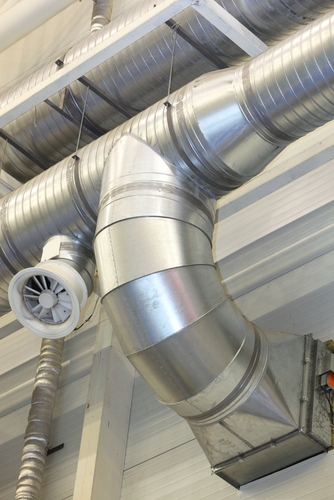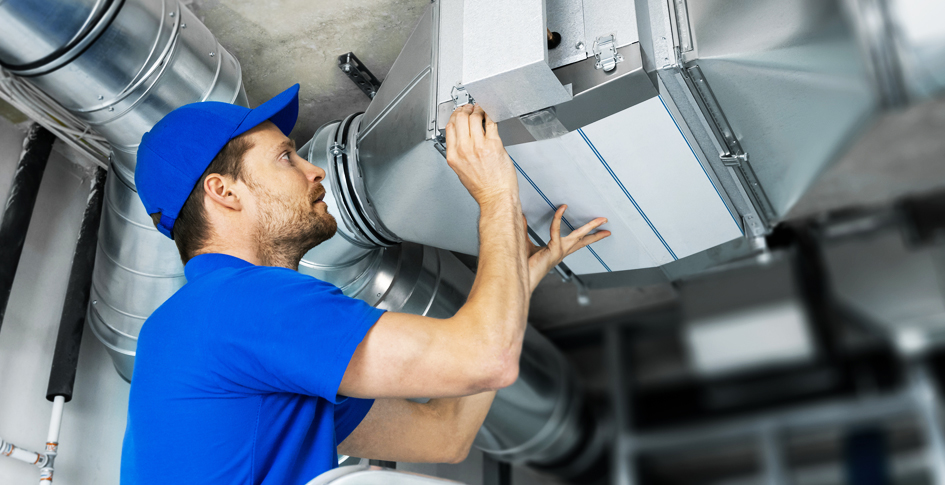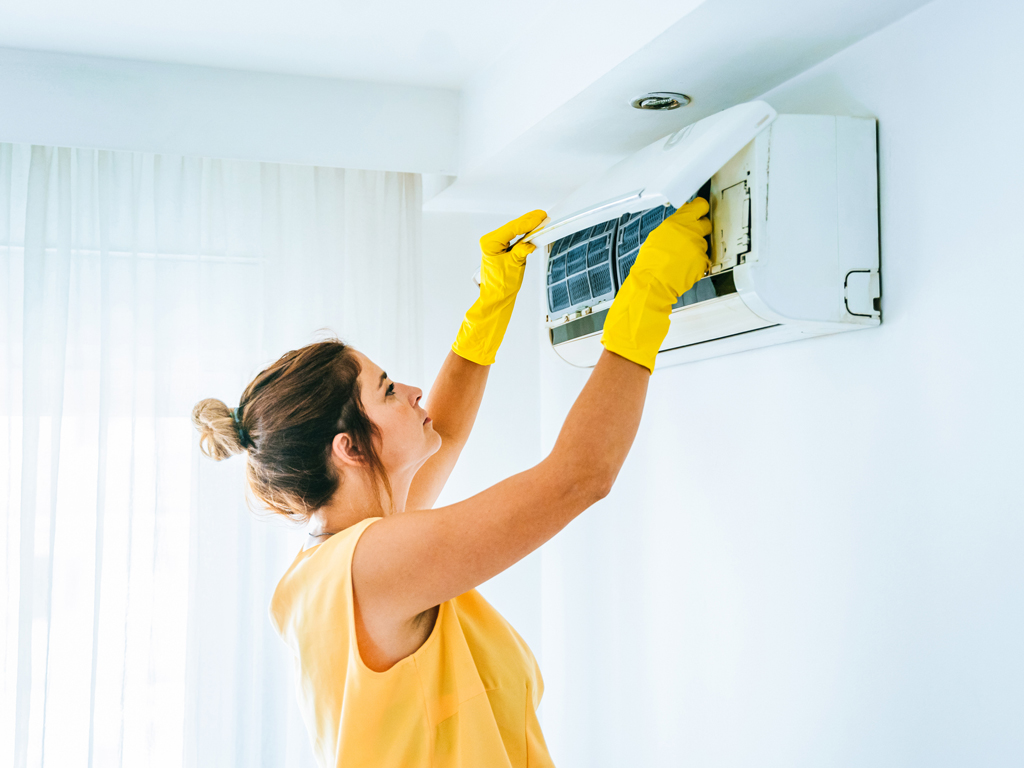
MARCH 31, 2022 / BY JOSEPH KNIPPER / 5 MINUTES OF READING
Would you expect your employees to drink from a muddy puddle outdoors? You certainly wouldn’t, because installing a water cooler is a fairly simple process that pays for itself in collaboration and camaraderie (not to mention the avoidance of cholera). However, you might indeed be forcing your employees to visit that metaphorical muddy puddle anyway—not for a drink, but for a breath. Such was made quite clear during the recent White House briefing, “Let’s Clear the Air on COVID.”
This webinar was held by the White House's Office of Science and Technology Policy on March 29, 2022. Its goal was “[spotlight] the science behind improving indoor air quality to reduce COVID-19 transmission and produce better overall health outcomes – and how to engage Americans on the topic” (emphasis ours). It highlighted the recent federal Clean Air in Buildings Challenge, as well as the EPA's practical guide for building managers as they develop a custom indoor air quality (IAQ) plan. The event also presented a panel of experts discussing what their work had shown about the importance of indoor air quality. In case you don’t wish to wait for the transcript of the event, here are our six key takeaways:
- 1) Improving indoor air quality will reduce the spread of certain diseases.
When it comes to airborne diseases, air quality is everything. Originally it was believed that diseases like COVID-19 spread primarily through large droplets which quickly fall to the ground. However, we now know that the virus which causes COVID-19 primarily spreads through much smaller airborne particles—invisible aerosols which remain in the air longer and travel further than these large droplets. These particles require layered prevention strategies beyond masking and distancing. They require improved air quality. The briefing emphasized three methods of improving IAQ: ventilation, filtration, and disinfection.
- 2) Filtration and Ventilation alone may not suffice.
Many older buildings can’t handle the strain of the high-MERV filters recommended for catching the smallest particles. Meanwhile, certain settings easily increase ventilation because of design (i.e., the windows don’t open), seasonal temperature changes, or expense.
Partially for this reason, the federal government has recently added air disinfection to its list of IAQ tools. Certain high-risk settings (such as hospitals) used air disinfection even before the pandemic.
Several of the panelists emphasized the need for air disinfection technology which is scientifically tested in the field by unaffiliated parties. We’d like to point out that ActivePure Technology fits this description.
- 3) Air quality and energy efficiency are not mutually exclusive.
To the detriment of indoor air quality, most modern buildings are designed to be airtight in pursuit of energy efficiency. However, several of the panelists emphasized that air quality and energy efficiency can indeed coexist. For one, devices such as economizers can bring in more outdoor air without degrading the efficiency of your HVAC system. For another, giving your building's ventilation system a periodic tune-up can also help improve its efficiency.
Replacing filters is not the only thing that needs to be done to improve indoor air quality. Image credit: Getty / Obradovic
Investment in improved air quality is just that—an investment…and it has quite the rate of return. According to Dr. Joseph Allen of the Harvard T.H. Chan School of Public Health:
Clearly, improving air quality pays for itself. However, if you need help getting started on that initial investment, the federal government is lending a helping hand. According to the aforementioned blog, “Federal funds and resources are available to support improvements in ventilation, filtration, and clean indoor air – the American Rescue Plan has [allocated] $122 billion for schools and $350 billion for state, local, and Tribal governments, which can support upgrades to their local businesses, nonprofits, community centers, and other commercial and public establishments.” These resources are available to private organizations through local governments.
Starting in 1908, American cities adopted water purification one by one, and deaths from infectious diseases dropped dramatically. For instance, according to the CDC, “In 1900, the occurrence of typhoid fever in the United States was approximately 100 cases per 100,000 people. By 1920, it had decreased to 33.8 cases per 100,000 people.”:
Every idea that reduces the spread of infectious diseases goes through a period of transition before it is adapted as a norm. Such was the case with water purification in the early 20th century. And such is the case with air purification in the early 21st century. Don’t make your workers and residents breathe the aerosolized equivalent of a medieval river.
- 4) Improving indoor air quality will pay for itself. The briefing’s participants cited multiple studies which associated poor air quality in offices and schools with poor cognitive performance and increased absenteeism. These negative effects don’t just impact individuals; they impact the bottom line.
- At an investment in air quality of $40 per person per year, organizations see $7,000 per person per year in benefits.
- Companies which improve ventilation and filtration also see a 10% benefit to the bottom line.
- Healthy buildings command rent $4 to $5 higher per square foot.
- 5) Clean water is an expectation of modern society. Clean indoor air will become an expectation too.
Your workers and residents will continue to demonstrate increased awareness of the need for clean, indoor air. Eventually, it may be as expected as indoor plumbing.
As Dr. Alondra Nelson phrased it in her blog associated with the briefing, “For decades, Americans have demanded that clean water flow from our taps and pollution limits be placed on our smokestacks and tailpipes. It is time for healthy and clean indoor air to also become an expectation for us all.”
- 6) Everyone's IAQ plan will be different.
The Clean Air in Buildings Challenge encourages everyone who manages a building to develop an IAQ plan. As the above lessons make clear, this solid investment provides benefits to organizational morale, individual health, and the bottom line. However, an older school building in the suburbs is going to need a very different environmental control strategy than a brand-new skyscraper in an urban center. As the EPA’s Tracy Enger put it, everyone has a “galaxy of resources” they can use to design a plan which meets their needs.
ActivePure would like to be one of those trusted resources. Our local partners are fully equipped to perform the testing and evaluation needed. We will also advise you as you develop your IAQ strategy—a strategy which can pay dividends for years to come.




